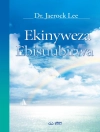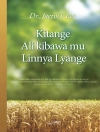Explores how the flood myths of early China provided a template for that society’s major social and political institutions.
Early Chinese ideas about the construction of an ordered human space received narrative form in a set of stories dealing with the rescue of the world and its inhabitants from a universal flood. This book demonstrates how early Chinese stories of the re-creation of the world from a watery chaos provided principles underlying such fundamental units as the state, lineage, the married couple, and even the human body. These myths also supplied a charter for the major political and social institutions of Warring States (481–221 BC) and early imperial (220 BC–AD 220) China.
In some versions of the tales, the flood was triggered by rebellion, while other versions linked the taming of the flood with the creation of the institution of a lineage, and still others linked the taming to the process in which the divided principles of the masculine and the feminine were joined in the married couple to produce an ordered household. While availing themselves of earlier stories and of central religious rituals of the period, these myths transformed earlier divinities or animal spirits into rulers or ministers and provided both etiologies and legitimation for the emerging political and social institutions that culminated in the creation of a unitary empire.
İçerik tablosu
Acknowledgments
Introduction
Comparative Flood Myths
Chinese Flood Myths
1. Flood Taming and Cosmogony
Cosmogonies and Social Divisions
Social Divisions and the Flood
The Flood and the Human–Animal Divide
The Flood and Human Nature
The Flood and Local Cultures
Conclusion
2. Flood Taming and Criminality
Criminality and the Collapse of Social Divisions
Gong Gong as a Criminal
Gun as a Criminal
Criminality and Flood in the
Shan hai jing
Criminality, Floods, and the Exile of Sons
Conclusion
3. Flood Taming and Lineages
The Sages as Bad Fathers and Sons
The Demon Child
Fathers, Sons, and the Collapse of Social Divisions
Conclusion
4. Flood Taming, Couples, and the Body
The Mythology of Nü Gua and the Flood
The Mythology of Nü Gua and Fu Xi
The Iconography of Nü Gua and Fu Xi
Yu, Marriage, and the Body
Conclusion
Conclusion
Notes
Works Cited
Index
Yazar hakkında
Mark Edward Lewis is Kwoh-ting Li Professor of Chinese Culture at Stanford University and the author of Writing and Authority in Early China and The Construction of Space in Early China, both published by SUNY Press.







![Örtmek Brian Schrag & Julisa Rowe: Community Arts for God's Purposes [Chinese] 貼近神心意的社群藝術 Örtmek Brian Schrag & Julisa Rowe: Community Arts for God's Purposes [Chinese] 貼近神心意的社群藝術](https://static.worldofdigitals.com/thumb_webp/740/9781645083740.webp)




